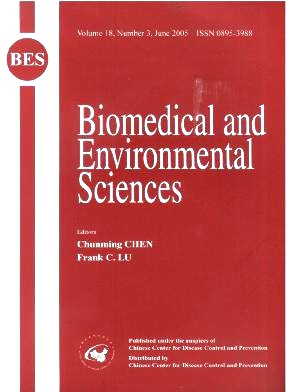Efficient and Quick Inactivation of SARS Coronavirus and Other Microbes Exposed to the Surfaces of Some Metal Catalysts
-
Key words:
- Metal catalysts /
- Inactivation /
- SARS-CoV /
- Baculovirus /
- E. coli /
- Infectivity
Abstract: Objective To study the two metal catalysts Ag/Al2O3 and Cu/Al2O3 that interdict the transmission pathway for SARS and other respiratory infectious diseases. Methods Two metal catalysts Ag/Al2O3 and Cu/Al2O3 were pressed into wafers. One hundred μL 106 TCID50/mL SARS-CoV, 100 μL 106 PFU/mL recombinant baculovirus expressing hamster's prion protein (haPrP) protein and roughly 106 E. coli were slowly dropped onto the surfaces of the catalyst wafers and exposed for 5 and 20 min, respectively. After eluted from the surfaces of wafers, the infectivity of viruses and propagation of bacteria were measured. The expression of PrP protein was determined by Western blot. The morphological changes of bacteria were observed by electronic microscopy. Results After exposure to the catalysts surfaces for 5 and 20 min, the infectivity of SARS-CoV in Vero cells and baculovirus in Sf9 cells dropped down to a very low and undetectable level, and no colony was detected using bacteria culture method. The expression of haPrP protein reduced to 21.8% in the preparation of Sf9 cells infected with recombinant baculovirus exposed for 5 min and was undetectable exposed for 20 min. Bacterial membranes seemed to be cracked and the cytoplasm seemed to be effluent from cell bodies. Conclusion Exposures to the surfaces of Ag/Al2O3 and Cu/Al2O3 destroy the replication and propagation abilities of SARS-CoV, baculovirus and E. coli. Inactivation ability of metal catalysts needs to interact with air, utilizing oxygen molecules in air. Efficiently killing viruses and bacteria on the surfaces of the two metal catalysts has a promising potential for air-disinfection in hospitals, communities, and households.
| Citation: | JUN HAN, LAN CHEN, SHU-MIN DUAN, QING-XIANG YANG, Min Yang, CHEN GAO, BAO-YUN ZHANG, Hong HE, XIAO-PING DONG. Efficient and Quick Inactivation of SARS Coronavirus and Other Microbes Exposed to the Surfaces of Some Metal Catalysts[J]. Biomedical and Environmental Sciences, 2005, 18(3): 176-180. |







 Quick Links
Quick Links
 DownLoad:
DownLoad: